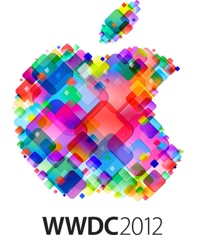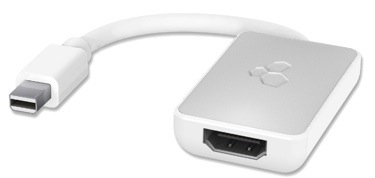Welcome to EyeTV 3.0.2!
System Requirements
EyeTV 3.0.2 is a Universal application. It requires a Macintosh computer
with built-in USB 2.0 ports, and Mac OS X 10.4 (Tiger) or later. We
recommend Mac OS X 10.5.2 Leopard with all software and security updates
installed.
Installation
If this is the first time you have launched any version of EyeTV 3, you
will be asked to enter the EyeTV 3 activation key. If you purchased an
EyeTV 3 Upgrade product, EyeTV 3 will check whether an EyeTV 2 installation
is present on your hard drive. If EyeTV 3 cannot find a previous EyeTV 2
installation, it will ask you to enter an eligible EyeTV 2 activation key
as well.
Keep all EyeTV activation keys in a safe place, in case you need to
reinstall the EyeTV software. Your activation key is also used to activate
and identify your Electronic Program Guide account (see below).
After you activate EyeTV, the EyeTV Setup Assistant will guide you through
the complete setup and configuration of EyeTV 3. You should complete each
step of the EyeTV Setup Assistant. When prompted, please select your
country and let EyeTV auto-tune for channels — this is necessary to ensure
the correct initial setup of the built-in Electronic Programming Guide
(EPG).
What’s new in EyeTV 3.0.2?
Full Support for H.264 Broadcasts
EyeTV now fully supports digital television H.264 broadcasts in standard TV
and HDTV resolutions. More and more countries are adopting the H.264 video
compression standard for digital television. H.264 provides excellent
picture quality at lower data rates than MPEG-2, thus reducing the amount
of bandwidth required per channel. The end result is that television
stations can broadcast more channels, while using the same number of
transmitters.
Several countries’ over-the-air DVB-T broadcasts exclusively use the H.264
format:
In Norway, both the free and Pay TV (RiksTV) services use H.264.
New Zealand’s Freeview|HDTM service also uses H.264.
Many other countries broadcast H.264 HDTV test transmissions in certain
areas. H.264 broadcasts are also available in many digital cable systems
and via satellite (DVB-S2). All EyeTV 310 digital satellite tuners shipped
since November 2007 are capable of receiving DVB-S2.
Closed Captions Support in QuickTime Format Exports (North America only)
EyeTV now supports the exporting of ATSC/NTSC Closed Captions for use on
iPhone, iPod, and Apple TV. The Closed Captions are also supported for
playback in QuickTime and iTunes.
When an ATSC/NTSC EyeTV recording with Closed Captions is exported from
within EyeTV, EyeTV automatically creates a Closed Captions text track. The
Closed Captions will be played back on the iPhone, iPod and Apple TV if
Closed Captions have been enabled on the device. Turn on “Show Closed
Captioning” in QuickTime Player, or the appropriate “Show Closed Captions
When Available” preference on the iPod/iPhone/Apple TV or in iTunes.
EyeTV will export the last Closed Caption track used in EyeTV. For example,
if CC3 captions are used, they will be converted to CC1 captions upon
export. Only one Closed Captions track is supported.
It is recommended to have the latest software and firmware updates for
QuickTime, iTunes, iPhone, iPod and Apple TV as older versions did not
support Closed Captions.
tvtv Sweden
Sweden has been added to the list of countries available for use with the
tvtv electronic programming guide (EPG). When Sweden is selected as a
country, the EPG will automatically be set to tvtv – UK.
Separate Deinterlacing Options for Standard TV and HDTV
EyeTV now has separate deinterlacing options for Standard TV and HDTV. For
Standard TV on Intel Core Duo Macs, the default is Progressive Scan. For
HDTV, the default is Always. To change deinterlacing, open the Display pane
in the EyeTV Preferences.
The deinterlacing options can also be changed by using the On Screen Menu.
This can be accessed by navigating to More)Settings)Display
Options)Deinterlace in the On Screen Menu.
Improved On Screen Menus
The text used in the On Screen Menus has been updated for improved
readability. Errors and messaging have also been improved to help users
troubleshoot problems.
The On Screen Menu now has an Audio item that can be used to select a
specific track on recordings with multiple audio tracks.
Closed Captions (CC), HD, and Stereo Icons are now displayed in the Details
screen of the On Screen Menu.
Unplayed Recordings Badge
EyeTV now displays a badge over the thumbnail of recordings that have not
yet been viewed.
Hardware Support
Support has been added for the TerraTec Cinergy T USB XXS.
Support has been added for the Digital Everywhere line of FireWire tuner
products (FireDTV C/CI, T/CI, and S2). Please contact Digital Everywhere
for a firmware update.
EyeTV 310 firmware has been updated to work with the Netherlands Pay TV
provider “Canal Digitaal”.
Bug Fixes
The overall stability and reliability of EyeTV has been improved.
EyeTV 3.0.2 now automatically updates the built-in EyeConnect server. If
you are using EyeTV 3’s shared archive feature, this requires updating to
EyeTV 3.0.2 on all computers.
A problem that caused MPEG Program Stream exports to be corrupted has been
resolved.
A problem where Smart Guides would not update if two Smart Guides used the
same criteria for “Any field” has been resolved.
A problem which caused the Smart Guide searches to be 1 hour off has been
resolved.
A problem where edited MPEG-4 EyeTV recordings would not play back over
markers has been resolved.
Numerous improvements to resolve problems while running EyeTV from a
non-admin user account.
Problems which would cause the EPG to not be updated on a Standard User
Account have been resolved.
The RAM Cache in EyeTV is now limited to 1.5GB.
The channel sorting for European channels has been improved.
A problem that would cause the Turbo progress bar in EyeTV to use a large
amount of CPU when exporting has been resolved.
EyeTV now correctly auto-tunes both UHF and VHF channels in New Zealand.
EyeTV now automatically starts and stops the EyeConnect server when the
location of the EyeTV archive has changed.
Resolved a problem with shared recordings not appearing.
A problem which caused SECAM D/K analog signals to lose audio has been
resolved.
DVB subtitles no longer display over the editor and On Screen Menus.
Improved parsing of the XMLTV data. Errors are now logged to the Console
when XMLTV files can not be parsed. Successful parsing of the XMLTV data is
also now logged to the Console.
Several problems with EyeTV’s auto update feature have been fixed so that
downloads are now more reliable.



